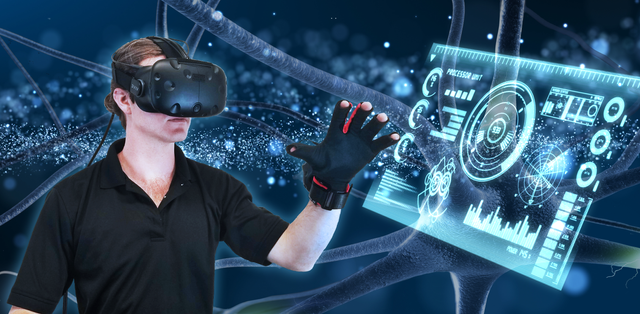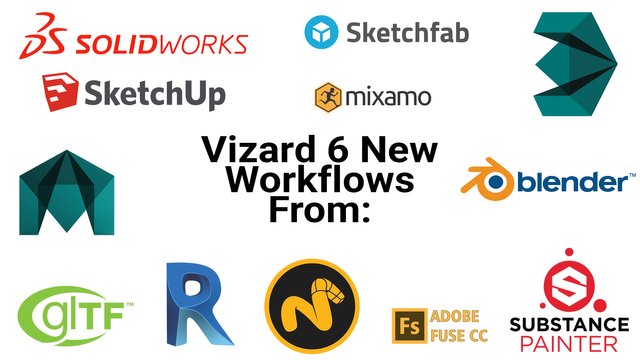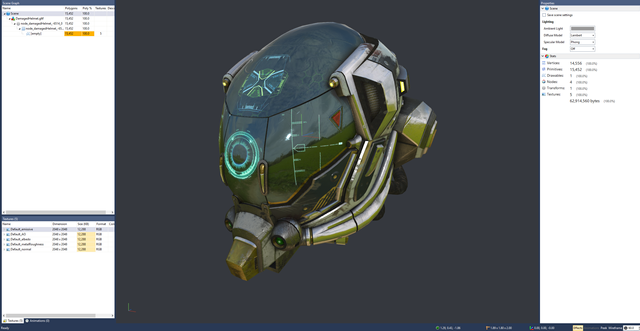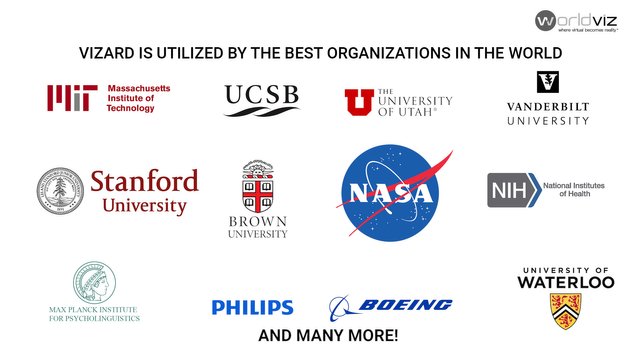
WorldViz Vizard is a virtual reality development environment designed for industrial, scientific, and academic VR content development. (Image courtesy WorldViz)
WorldViz has updated its virtual reality (VR) development platform Vizard. The update to this popular tool for scientific, academic, and industrial VR content creation focuses on three areas: new third-party VR headset and peripheral support; an easier art workflow with support for the 3D model format GLTF; and broader avatar support through Adobe Fuse CC.
Vizard allows researchers and application development team in industry to build precise and complex simulations that connect to all VR display environments (headsets, CAVEs, Powerwalls) and peripherals (head/hand trackers, haptic feedback devices, biophysical sensors).
New in Vizard 6 is support for all Windows Mixed Reality headsets and many new peripherals including the Manus VR Gloves and Tobii eye-tracking hardware. Vizard already supports more than 150+ peripherals and displays.
![]()
Vizard 6 supports full-body avatar tracking. (Image courtesy WorldViz)
Vizard now supports the new 3D model open format GLTF, which will improve rendering as well as provide workflow opportunities with such products as Autodesk Revit or Maya; Dassault Systemès SolidWorks; Blender; Trimble SketchUp; Algorithmic Substance Painter; The Foundry Modo; and more. Support for the SketchFab library of models is also in Vizard 6.

Vizard 6 supports a variety of commercial and open source content creation products. (Image courtesy WorldViz)
Previous versions of Vizard included a set of pre-defined avatars. This update offers support for avatars created in Adobe Fuse CC. Imported avatars retain all associated data such as skeletons.
Other new features:
- Added support for multi-user VR
- New VizConnect presets for one-click access to the most popular VR headsets
- Real-time data streaming of full-body tracked data using Vive Trackers
- Improved model and lighting workflows in the 3D model editor
- Backwards compatibility to all previous Vizard versions.

PBR Shading has been upgraded in Vizard 6. (Image courtesy WorldViz)
Consilia Vektor comments
WorldViz has proven there is a market for industrial and scientific/academic VR development. The competition for VR development are the game engines like Unreal and Unity, where VR is a small but growing side business. WorldViz, by contrast, is exclusively focused on the professional, non-entertainment VR developer. Vizard supports the fast-growing open source library of VR attributes written in Python, and supports a wide range of input devices such as EEGs, EKGs, and GSRs.
More information: www.worldviz.com

WorldViz counts a variety of leading research and industrial organizations as Vizard users. (Image courtesy WorldViz)